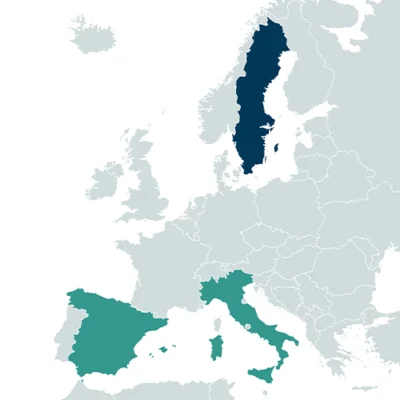Growing resilience by exploring methods to enhance urban agriculture for human well-being, community and biodiversity enrichment
Call
Duration
03/03/2025 – 02/03/2028
Total grant
Approx. 870 thsd. €
More information
Thomas Randrup, thomas.randrup@slu.se
Partners of the project
- Department of Landscape Architecture, Planning and Management, Swedish University of Agricultural Sciences, Lomma, Sweden
- Center for Ecological Research and Forestry Applications, Barcelona, Spain
- Department of Agricultural Sciences, University of Sassari, Sassari, Italy
- Department of Cultures, Politics and Society, University of Turin, Torino, Italy
- Botildenborg Foundation, Malmö, Sweden
- Municipality of Turin, Torino, Italy
- Barcelona Regional Metropolitan Agency for Development and Urban Planning and Infrastructure SA, Barcelona, Spain

Main objectives
GREENHANCEnbt seeks to understand the critical factors, tipping points, and underlying mechanisms that influence the successful implementation of Urban Agriculture (UA) as a means for supporting human health and well-being and biodiversity. We will study the interdependencies between UA, biodiversity and human well-being. To explore these dynamics and the underlying supportive structures and barriers, we adopt a Nature-Based Thinking (NBT) perspective.
NBT emphasizes three key dimensions in all nature-based interventions: the organizations, whether formal or informal, that own and manage natural spaces; the communities that interact with, depend on, and coexist with nature; and nature itself, including its inherent timing and cyclical patterns. We explore the relations between these dimensions in three European cities: Barcelona (Spain), Malmö (Sweden), and Turin (Italy). Urban Agriculture (UA) serves as the focal point of our investigation.
Main activities
GREENHANCEnbt will explore:
- the nature-organization nexus where we investigate the synergies and trade-offs associated with biodiversity enhancement and human well-being through an examination of how UA practices contribute to biodiversity enhancement and conservation, with a particular focus on habitat creation, support for pollinators, and the potential to enhance local ecosystem services;
- the community-nature nexus where we investigate how urban communities engaged in UA interact with nature and how these interactions influence human health and well-being and
- the community-organization nexus where we analyse how current governance arrangements, engage citizens and balance stakeholder interests, and the potential for both social cohesion and conflict resolution during UA implementation.
The findings of this project will have far-reaching implications, particularly in the fields of urban planning, policy development, biodiversity conservation, human well-being, stakeholder engagement, and the implementation of NbS.